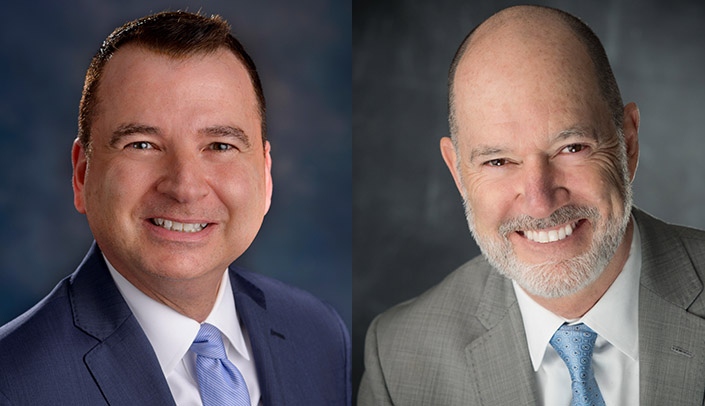Timothy Renick, PhD, says universities have more power to impact equity and achievement gaps than they may realize.
Dr. Renick knows because Georgia State University, where he serves as executive director for its National Institute for Student Success, has shown that it’s possible to erase achievement gaps without lowering admissions standards.
How? By understanding the challenges of college from a student’s perspective, and then making changes at an institutional, rather than programmatic, level.
On April 7, Dr. Renick discussed “Eliminating Equity Gaps Through Data and Analytics,” as part of UNMC’s Breakthrough Thinking Conference series, which is designed to challenge and inspire participants to creatively solve problems.
Miss the presentations? View a recording.
“What Georgia State has shown is that we are a large part of the problem,” he said. “We help create equity issues through our bureaucracies, systems and lack of clarity, but, because of that fact we also can be part of the solution.”
Between 2008-2020, Dr. Renick directed the student success efforts of the university, overseeing a 62% improvement in graduation rates and the elimination of all equity gaps based on students’ race, ethnicity or income level. For six consecutive years, Georgia State has graduated more African American students with bachelor’s degrees than any other not-for-profit college or university in the nation.
How? By studying its own enrollment data to see how they could better serve and retain students, and then redesigning the student experience from admissions to graduation. Along the way, they:
- Unveiled “Pounce,” an artificial-intelligence enhanced chatbot to answer admissions questions 24/7. Launched in 2016, the chatbot fielded more than 185,000 questions that summer with only a small percent requiring the attention of Georgia State staff. The chatbot is credited with reducing summer melt (students who get accepted but never enroll) by 22 percent that year, which translated into an additional 324 students on campus the first day of classes.
- Structured systems so that, rather than declaring a major, students decide on a general area of academic interest such as STEM, business or arts and humanities. That “meta-major” enables students to explore career paths and earn credits as they are deciding on a specific major. It gives students, Dr. Renick said, a fighting chance to make an informed decision without risking credits, tuition dollars or lengthening their education.
- Issued micro-grants to cover modest tuition and fee shortfalls, which their analysis showed often led students to stop for a semester. The average grant is $900, but the impact is immeasurable, Dr. Renick said.
As part of the Breakthrough Thinking session, Kevin Kruger, PhD, of the National Association of Student Personnel Administrators, discussed “How the COVID-19 Pandemic is Shaping the Future of Higher Education.”
Acknowledging the challenges of the past year, he said, “I hope you take some pride in what you have accomplished, advancing the educational endeavor in entirely different ways.”
Then, armed with data, Dr. Kruger provided attendees with a snapshot of the pandemic’s impact on university budgets, application trends, student stressors, admission rates and job outlooks, including the populations most impacted.
Moving forward, Dr. Kruger expects competition for campuses resources to become more intense, and says career, workforce and 21st century skill development will become priorities across U.S. institutions. Student services, he said, must increase digital and online content, just as counseling has expanded to telecounseling.
Finally, he said, faculty need to consider how best to engage students in civil and productive conversations, as well as play a robust role in addressing mental health issues among students. “The reality is students interact with faculty more than anyone, so faculty have to be part of the solution.”
